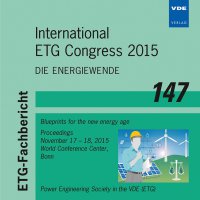Vertical Reactive Power Flexibility based on Different Reactive Power Characteristics for Distributed Energy Resources
Konferenz: International ETG Congress 2015 - Die Energiewende - Blueprints for the new energy age
17.11.2015 - 18.11.2015 in Bonn, Germany
Tagungsband: International ETG Congress 2015
Seiten: 7Sprache: EnglischTyp: PDF
Persönliche VDE-Mitglieder erhalten auf diesen Artikel 10% Rabatt
Autoren:
Talavera, Ignacio; Bennewitz, Florian; Hanson, Jutta (Technische Universität Darmstadt, Darmstadt, Germany)
Stepanescu, Sebastian; Huber, Richard; Oechsle, Fred (Netze BW GmbH, Stuttgart, Germany)
Abele, Hans (Transnet BW GmbH, Stuttgart, Germany)
Inhalt:
The potential to vary reactive power exchange between MV- and HV-networks using different reactive power charac-teristics for MV-connected Distributed Energy Resources (DER) is analysed in this paper. The main goal is to analyse if the properties of Vertical Reactive Power Flexibility (VRPF) are adequate for a reactive power management exclusively based on DER. Special attention is paid to the assessment of the reactive power flexibil-ity for a wide range of load and feed-in scenarios. Moreover, other aspects like network constraints and power losses are analysed and compared for the different reactive power characteristics. The purpose is to evaluate to which extent volt-age and thermal constraints of networks would limit the possible reactive power flexibility achieved by the three de-fined characteristics and the influence of reactive power flexibility on power losses. For the analysis, power system simulations are carried out using a detailed network model of eight rural 20-kV-networks with a high penetration of DER. These networks are real MV-networks located in Southern Germany. In addi-tion to MV-connected DER, the proposed concept for vertical reactive power flexibility uses the controllability of tap changers based on a coordinated Wide Area Voltage Control of the HV/MV-transformers. Based on the simulation results, a method is proposed that copes with the limitations of each of the analysed reactive power characteristics. As explained in the paper, the weighted use of two reactive power characteristics for DER is a good compromise in order to obtain a reliable, energy-efficient and cost-effective vertical VRPF.


